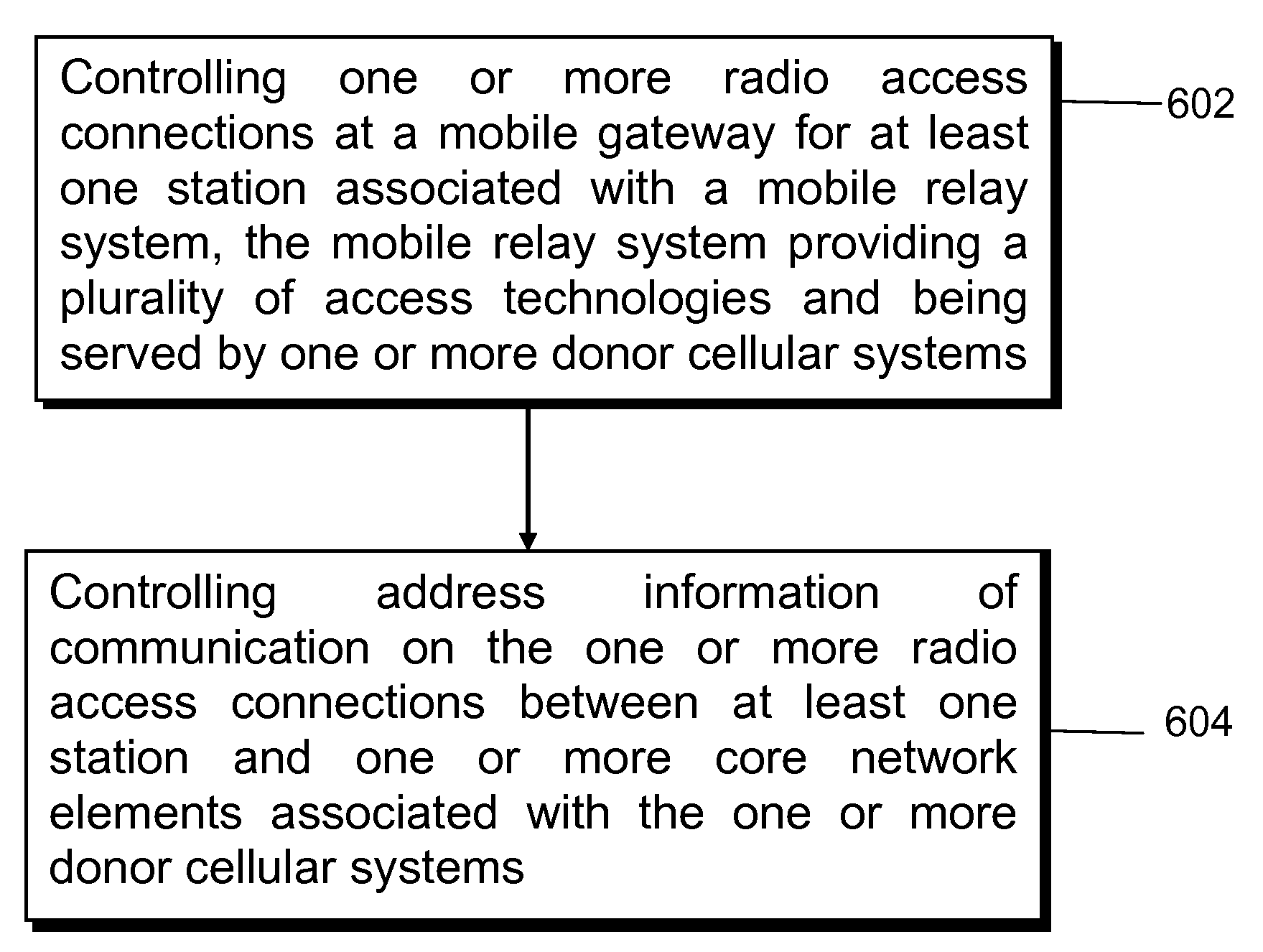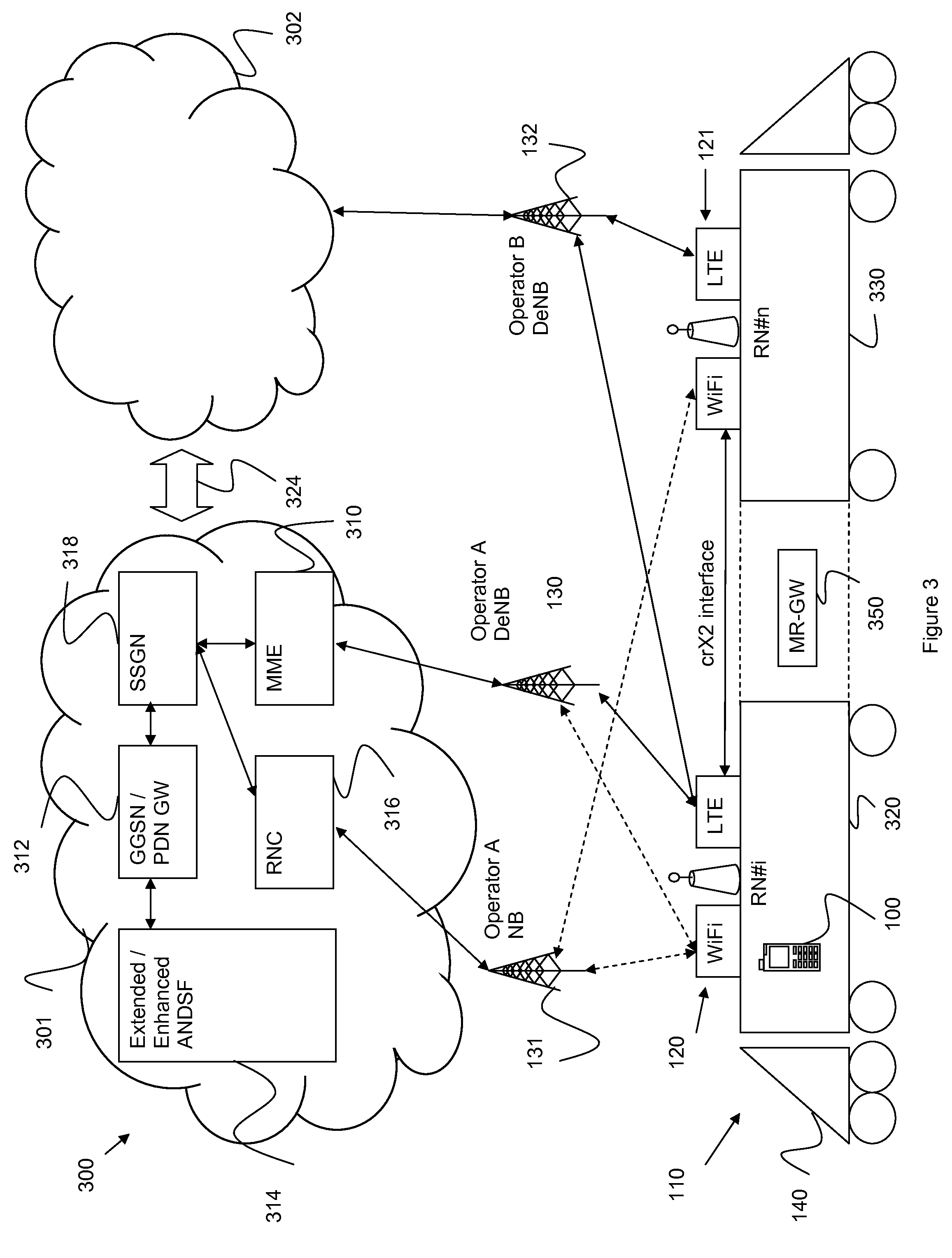Gateway functionality for mobile relay system
a technology of mobile relay and gateway, which is applied in active radio relay systems, wireless communication, network topologies, etc., can solve problems such as problems such as the inability to cover one base station, the inability to control the backhaul link between the relay node and the base station, and the inability to control the backhaul
- Summary
- Abstract
- Description
- Claims
- Application Information
AI Technical Summary
Benefits of technology
Problems solved by technology
Method used
Image
Examples
Embodiment Construction
[0045]In the following certain exemplifying embodiments are explained with reference to a wireless or mobile communication system serving mobile communication devices. Before explaining in detail the exemplifying embodiments, certain general principles of a wireless communication system, access systems thereof, and mobile communication devices are briefly explained with reference to FIGS. 1 to 4 to assist in understanding the technology underlying the described examples.
[0046]FIG. 1 shows a schematic representation of a mobile access system or mobile relay system 110 and part of a radio access network (RAN) including a base station 130. A mobile station 100, mobile communication device or user equipment (mobile station will be used hereinafter for the purposes of simplicity) can be provided with wireless access via at least one relay node 120 or relay station or similar wireless transmitter and / or receiver node of the mobile relay system 110. In FIG. 1 wireless access is provided to...
PUM
 Login to View More
Login to View More Abstract
Description
Claims
Application Information
 Login to View More
Login to View More - R&D
- Intellectual Property
- Life Sciences
- Materials
- Tech Scout
- Unparalleled Data Quality
- Higher Quality Content
- 60% Fewer Hallucinations
Browse by: Latest US Patents, China's latest patents, Technical Efficacy Thesaurus, Application Domain, Technology Topic, Popular Technical Reports.
© 2025 PatSnap. All rights reserved.Legal|Privacy policy|Modern Slavery Act Transparency Statement|Sitemap|About US| Contact US: help@patsnap.com



